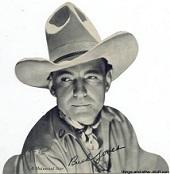- Posts: 14880
- Thank you received: 27
It's a 'red-letter day' on TeaPublican trail...
- LadyJazzer
-
 Topic Author
Topic Author
- Mountain Legend
-

[youtube:26mu60bl][/youtube:26mu60bl]
and
' A cowboy, a curmudgeon, a biker or a normal guy ': Hilarious GOP Idaho governor's debate makes comic history as candidates spar about racist jokes, 'spiritual warfare' and how nuclear accidents were foretold by the Bible."
Pictures/Video... And the laminated letter that Harley Brown claimed was from an African bishop, certifying that almighty God had told him he would be President of the United States someday...
You can't make this stuff up... :LMAO: :rofllol
"Operation American Spring"
But even BETTER...Today was the day that "10million to 30million" teabaggers/armed separatists/militia/Sovereign Citizen wackos...and truck drivers... were supposed to descend on D.C. and "tie up everything all the way to Maryland". Their mission: Arrest Obama and throw him in prison... (How does that work?)
Well, the turnout was a bit short of the predicted 10-30 million... It wasn't 100,000... 10,000...or even 1,000... It came in a bit short of 300... But, by god, god was on their side and they were there to "mean business"...
I think we've just about seen the death of the Teabaggers--at least the ones that aren't in primaries or in office... (Seeing as how the American public has gone from 20% approval, to 60% "You guys are whack-jobs"...)
Looks like the teabagger who ran against Mitch McConnell not only doesn't have a prayer, but he's admitted that Lundergren-Grimes is likely to win. Whatever will they do when they don't have the great "King of 'No'" in the Senate?
Thanks for making my day...
Please Log in or Create an account to join the conversation.
- Martin Enterprises
-

- Mountain Folk
-

- Posts: 89
- Thank you received: 0
Please Log in or Create an account to join the conversation.
- LadyJazzer
-
 Topic Author
Topic Author
- Mountain Legend
-

- Posts: 14880
- Thank you received: 27
This is like some kind of reality-show, "Buffoons on Parade"....
Believe me, I'm anything but "sad" :LMAO:
Please Log in or Create an account to join the conversation.
- Arlen
-

- Mountain Legend
-

- Posts: 1548
- Thank you received: 11
Please Log in or Create an account to join the conversation.
- Cathy_Lee
-

- Mountain Folk
-

- Posts: 114
- Thank you received: 0
Who really wants to see an end to the two party system?
Please Log in or Create an account to join the conversation.
- LadyJazzer
-
 Topic Author
Topic Author
- Mountain Legend
-

- Posts: 14880
- Thank you received: 27
Which, of course, as always, ignores the 40 years of "Southern Strategy" that flipped every racist, KKK, civil-rights-opponent bigot over to the Republicans in the 50's, 60's. How you love to point to what party definitions/labels were in the 1860's, vs. what they became in the 60's... Sorry...The hateful wackos are on YOUR side, and have been for 50 years.
God, I love GoTP revisionist-history and hypocrisy, I could sit and watch it for ... minutes...
Civil Rights and the History of Party Platforms. And Ann Coulter.
the Democratic Party was driven by states’ rights and the preservation of slavery as the driving force of its economy. The mere notion of preserving a traditional means of prosperity, no matter how dubious, is inherently conservative. Today, who do we identify with small government, tradition and states’ rights? Conservatives. Conversely, “big government” is a purview of liberalism. Ron Paul, the most conservative member of Congress in the last 80 years, has a stock answer to every policy question he’s asked: “Leave it up to the states.” Conservatives hold sacred the archaic 10th Amendment, which grants state governments all of the powers not specifically enumerated in the Constitution. In 1860 and following the war, supporters of this concept identified with and voted for the Democratic Party.
In the South, party identification became locked down until the Civil Rights Act over 100 years later. Yet the South continued to be marked by conservatism. Yes, there were anti-black racists all across the political spectrum, and this was further cemented by propaganda meant to unite the North and South following the end of Reconstruction. Instead of shooting at each other across the battlefields of Gettysburg and Antietam, political leaders turned freed slaves and their descendants into the common enemy. Whites from Texas to New Hampshire would have something upon which they could agree: black people were the enemies of American society and prosperity.
Throughout the 103 years between the 13th Amendment and the Civil Rights Act, liberal values shifted to the Democratic Party and conservative values shifted to the Republicans. Some Democrats in the South would remain conservative into the 1960s, even though much of the party had shifted to the liberalism of FDR, Kennedy and LBJ. Again, party identification wasn’t necessarily about the platform. The core values of Strom Thurmond’s old school Southern Dixiecrats had nothing in common with Kennedy’s New Frontier. Segregation laws all across the country were simultaneously created, enforced and opposed by both Republicans and Democrats, even though liberals tended to oppose them.
...[more]
The Conservative Fantasy History of Civil Rights
[The] story completely ignores the explicit revolt by conservative Southerners against the northern liberal civil rights wing, beginning with Strom Thurmond, who formed a third-party campaign in 1948 in protest against Harry Truman’s support for civil rights. Thurmond received 49 percent of the vote in Louisiana, 72 percent in South Carolina, 80 percent in Alabama, and 87 percent in Mississippi. He later, of course, switched to the Republican Party.
Thurmond’s candidacy is instructive. Democratic voting was deeply acculturated among southern whites as a result of the Civil War. When southern whites began to shake loose of it, they began at the presidential level, in protest against the civil rights leanings of the national wing. It took decades for the transformation to filter down, first to Congressional-level representation (Thurmond, who Williamson mentions only in his capacity as a loyal Democrat, finally switched to the GOP in 1964), and ultimately to local-level government. The most fervently white supremacist portions of the South were also the slowest to shed their Confederate-rooted one-party traditions. None of this slowness actually proves Williamson’s contention that the decline of the Democratic Party in the South was unrelated to race.
Williamson concedes, with inadvertently hilarious understatement, that the party “went through a long dry spell on civil-rights progress” — that would be the century that passed between Reconstruction and President Eisenhower’s minimalist response to massive resistance in 1957. But after this wee dry spell, the party resumed and maintained its natural place as civil rights champion. To the extent that Republicans replaced Democrats in the South, Williamson sees their support for civil rights as the cause. (“Republicans did begin to win some southern House seats, and in many cases segregationist Democrats were thrown out by southern voters in favor of civil-rights Republicans.”) As his one data point, Williamson cites the victory of George Bush in Texas over a Democrat who opposed the 1964 Civil Rights Act. He correctly cites Bush’s previous record of moderation on civil rights but neglects to mention that Bush also opposed the 1964 Civil Rights Act.
If anyone should be "in hiding" it should be the right-wing gun-nut armed-separatists of the militia/Sovereign Citizen/teabagger movement... (I think that welfare-cowboy/deadbeat Cliven Bundy & Harley Brown are calling...) They are "singing the song of your people..." :rofllol :LMAO:
Go sell your Right-Wing-Crazy somewhere else... We're all full up here.
Please Log in or Create an account to join the conversation.
- LadyJazzer
-
 Topic Author
Topic Author
- Mountain Legend
-

- Posts: 14880
- Thank you received: 27
Cathy_Lee wrote: I think she may believe the more modern Democrat movement that built a civil rights plank in the Democratic campaign in 1948, (triggering the Dixiecrats), the segregation of the U.S. Army, the passage of the Civil Rights Act of 1964, Voting Rights Act of 1965, and desegregation in the U.S. may have overcome their earlier history and the racist Southern Strategy of the Republicans.
Who really wants to see an end to the two party system?
:YeahThat:
Please Log in or Create an account to join the conversation.
- Martin Enterprises
-

- Mountain Folk
-

- Posts: 89
- Thank you received: 0
Please Log in or Create an account to join the conversation.







